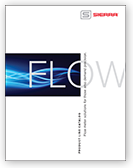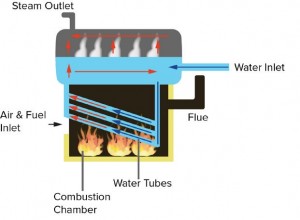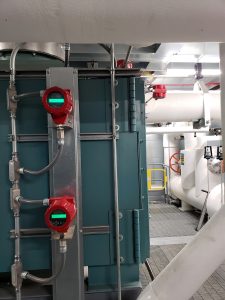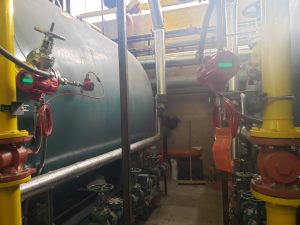Official Blog of Sierra--Let's Talk Flow!
Understanding Flow Measurement for Emissions Monitoring
Take Charge of Your Boiler Efficiency & Avoid Steep EPA Emissions Fines
Sounds like an impossible task, but it’s not.
Emissions monitoring is a hot topic for plant and facility managers due to the elevating importance of three factors:
- Global climate-change mitigation efforts
- Increasing governmental regulations
- Social pressures
Due to this, there is also a heightened importance to accurately measure gas flow for high boiler and process-heater efficiency. Why? Because accurate flow measurement is critical to achieving boiler efficiency.
Measuring Flow in Your Boiler
In emissions control and combustion applications, flowmeters are used to measure the flow of fuel gas (normally natural gas) and air to combustion burners within various types of process equipment to maintain a fuel-to-air ratio that will maximize efficiency while producing minimal pollutant products. Ratios that are either too rich in natural gas, or too lean, will result in unnecessary emissions and wasted fuel.
Flow measurement technologies can be used in industrial boilers to monitor the air and fuel inlet, as well as the water inlet and the steam outlet
If the flow of gaseous combustion products — including greenhouse gases like carbon dioxide, carbon monoxide, nitrogen oxides (NOx) and unburned methane — as well as the fuel input, can be measured accurately, users can gain a full picture of the boiler’s efficiency. Accurate measurement of steam production determines whether a boiler is producing the expected amount of steam for the fuel input, or if the boiler needs to be tuned for increased efficiency.
What is Boiler MACT?
Large facilities like petroleum refineries and chemical manufacturing facilities with boilers and process heaters must meet emissions requirements established in the National Emission Standards for Hazardous Air Pollutants (NESHAP) for industrial, commercial, and institutional boilers and process heaters standards, issued by the EPA which are based on Boiler MACT.
Boiler MACT (Maximum Achievable Control Technology) is an EPA rule to limit hazardous air pollutants (HAP) from commercial and industrial boilers and process heaters. Driven by the Clean Air Act, the rules are Area Source Boiler MACT 40 CFR 63, subpart JJJJJJ for smaller boilers (stores, hotels, apartments, small manufacturers, etc.) and Major Source Boiler MACT subpart DDDD for large boilers (petroleum refineries, chemical and large manufacturing plants, large facilities).
The rules require two things from manufacturers:
- Facilities must monitor the amount of emissions of carbon monoxide, particulate matter, mercury, HCl, and other pollutants.
- Requires end-users to “tune” new boilers when they first start up, and then perform periodic tuning to measure the boiler’s efficiency in combusting the fuel and turning the water into steam.
Tuning Your Boiler
Tuning a boiler or process heater involves inspecting the flame pattern and adjusting the burners, as well as inspecting the system that controls the air-to-fuel ratio to ensure it is correctly calibrated and operating properly. Facilities that tune their boilers to ensure the maximum boiler efficiency can simultaneously minimize the amount of air pollutants generated.
A well-tuned boiler is 80% efficient. If your boiler is less than 80% efficient then you are wasting energy and releasing hazardous air pollutants into the environment unnecessarily. Improving the suboptimal efficiency could involve repairing leaks, adding insulation and cleaning heat exchanger tubes.
Highly efficient boilers and process heaters minimize the release of greenhouse gases, and accurate flow measurement is an essential part of achieving high efficiency. Flowmeter manufacturers with Boiler-MACT-compliant devices are capable of measuring the combustion gases produced.
Flow Measurement Technologies to Improve Boiler Efficiency
Flowmeters can help meet Boiler-MACT emissions limits and there is a wide range of technologies available for the measurement of gas flowrate in closed pipes for applications involving combustion and steam. Flowmeters can be categorized in several ways, but one approach is to divide them into four classes: mass, velocity, differential pressure, and positive displacement.
Available technologies include:
- Mass flow meters
- Thermal mass flow meters
- Coriolis mass flow meters
- Velocity meters
- Vortex flowmeters
- Turbine flowmeters
- Ultrasonic flow meters
- Differential pressure flowmeters
- Positive displacement flowmeters
Key parameters for assessing the effectiveness of a flowmeter device include accuracy, durability, maintenance, and total cost of ownership. The different strength-and-weakness profiles for flowmeters partly depend on the requirements of the application, including whether the fluid being measured is a gas or liquid.
For this blog’s purposes, we are going to look at some of the available flow technologies.
Strengths and Weaknesses of Available Flow Measurement Technologies to Improve Boiler Efficiencies
The Best Choice for Optimizing Your Boiler Efficiency
For gas-flow applications, thermal mass flowmeters often emerge as the best choice. The newest models of thermal mass flowmeters are often able to overcome the limitations of previous models. For example, the accuracy of Sierra’s QuadraTherm thermal mass meters rivals that of Coriolis meters, but at lower prices. In addition, thermal mass flowmeters have wider application flexibility, and the efficiency and capabilities of the latest thermal mass flow meters have been enhanced to include better turndown ratios, minimal pressure drop and the ability to install the instruments without having to shut down a process.
Learn more about flow measurement for emissions monitoring and improving your boiler efficiency, download our new white paper “Understanding Flow Measurement for Emissions Monitoring.”
For more information about tuning your boiler, watch our “3 Tips to Improve Energy Efficiency” video or read or our previous blog, “Tuning Your Boiler for EPA Boiler MACT Compliance.”
Scott Rouse, Product Line Director
Sierra Instruments

 Go to Autotest Division >
Go to Autotest Division > DOWNLOAD
DOWNLOAD





